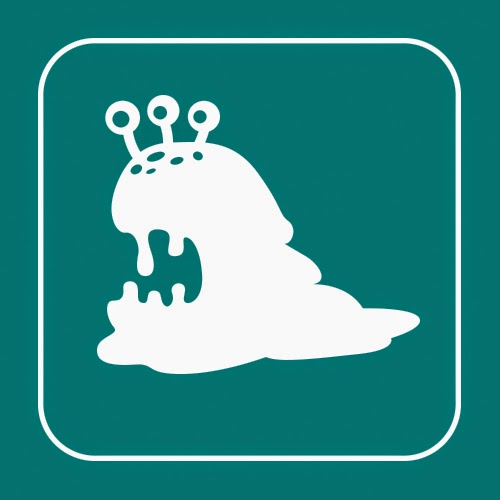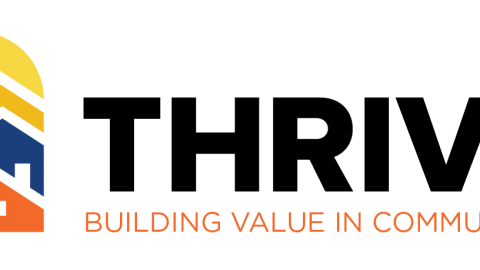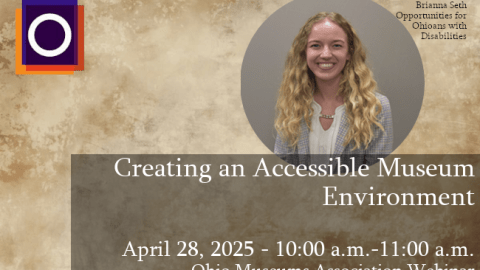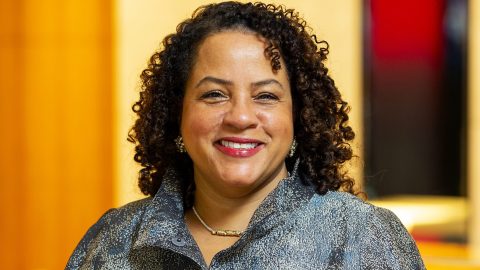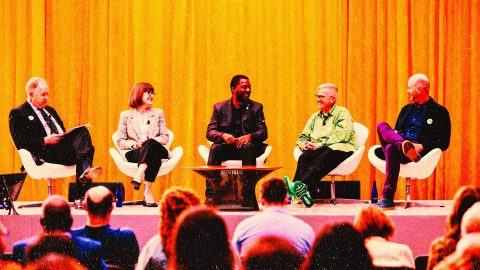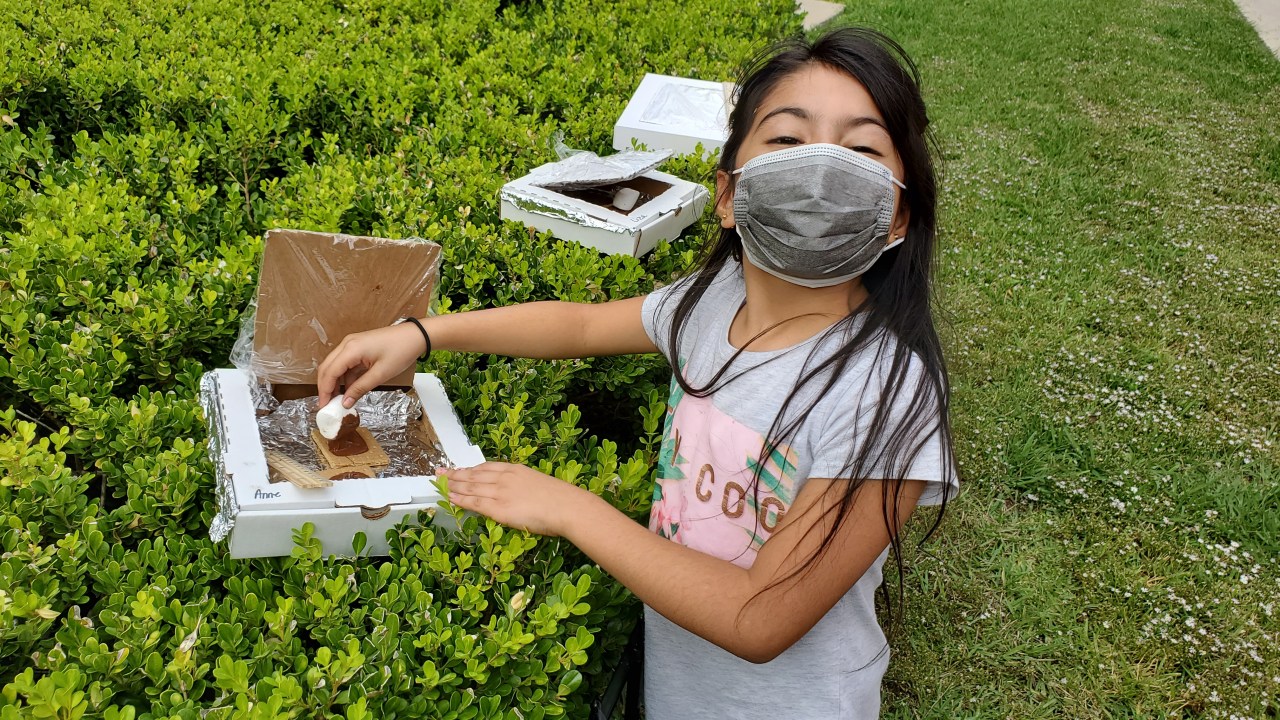
This is an excerpt from TrendsWatch: Museums as Community Infrastructure. The full report is available as a free PDF download.
“Given the challenges we face, education doesn’t need to be reformed—it needs to be transformed.”
Twenty years into the new millennium, the US is still struggling to create a P-12 education system that provides each child with the support they need to become a healthy, well-balanced, self-sustaining adult. Copious research suggests that the system we inherited from the last century, with its focus on age-based cohorts and standardized curricula, is poorly suited to foster critical thinking, problem-solving, synthesis, innovation, creativity, teamwork, and collaboration—skills widely seen as essential for thriving in the twenty-first century. The COVID-19 pandemic has added to these challenges by exposing the fragility of our educational infrastructure, widening existing educational disparities and demonstrating that alternate forms of learning can be better, more effective, and more accessible for some. Museums have been living the educational future for decades, providing the kind of self-directed, experiential, social, and distributed learning that is proving to be both effective and resilient. Building on these strengths, the museum sector can play a vital role in rebuilding and transforming P-12 education to be better, stronger, and more equitable for all of America’s children.
The Challenge
Like so many US systems, from finance to justice to government, the existing education system is structurally inequitable in its design. As currently constituted, our public and private systems of education reinforce and perpetuate advantages based on race, gender, sexual orientation, culture, ability, and socioeconomic status. This structural inequity exists not only because of zip-code-based allocation of resources (which could theoretically be fixed by giving more and better access to historically marginalized groups), but because the system is fundamentally designed to favor a specific, narrow range of abilities and learning styles. To paraphrase education critic Sir Ken Robinson, the whole system of public education has been created in the image of higher education, and treats primary and secondary school as a protracted university entrance exam. “The consequence,” he explains in a TED talk, is that “many highly talented, brilliant, creative people think they’re not [brilliant and talented], because the thing they were good at at school wasn’t valued, or was actually stigmatized.”
In the past decade, top-down educational reform has largely focused on creating a common set of standards and doubling down on standardized testing. These efforts have been, at best, unsuccessful, and may have actually made things worse for both students and teachers. The Common Core standards, introduced in 2010, have cost billions of dollars without resulting in any measurable improvement in results. Many critics feel that the emphasis on testing has disempowered and demoralized teachers, helping fuel a chronic shortage of qualified, skilled educators, especially in low-income communities and hard-to-staff roles.
We already knew that a one-size-fits-all approach doesn’t work for many children, and the COVID-19 pandemic threw that into stark relief. While prolonged disruption set back student learning overall, the effect was especially severe for Black, Hispanic, and Indigenous communities. Low-income families were less likely to be able to provide the internet access, devices, and dedicated, quiet study space needed for successful online learning. As of spring 2021, nearly one-fifth of households with school-age children did not have consistent access to the internet for education, and this lack of access was highest for Latinx, Black, and mixed-race households, with predictable results. A study by the consulting firm McKinsey suggested that students of color lost three to five months of math learning over the 2019-2020 school year, compared to one to three months lost by white students. A metadata analysis by the US Department of Education’s Office for Civil Rights found that pandemic learning disruptions were also particularly severe for students learning English as a second language, students with disabilities, LGBTQ+ students, and students who are caregivers for their families.
The pandemic was devastating for educators as well, placing them in the role of front-line emergency responders with limited training or support. Teachers found themselves working even longer hours, learning how to teach online, and in many cases juggling both in-person and online teaching simultaneously. While teacher turnover actually declined in 2020 (because, heroes), the pandemic took a heavy toll on morale, with one-third of teachers saying it has made them more likely to leave teaching or retire early. Almost twenty-five thousand people quit the public education sector in August 2021, and the Bureau of Labor Statistics forecasts that the annual turnover rate for experienced educators and school principals will rise to 42 percent.
But the pandemic also surfaced important signals of potential positive change. While distance education was a disaster for some children who thrived in traditional schools, it proved to be a superior option for some kids disadvantaged by the established system. A number of students, including some with ADHD, autism, or other neurodivergent conditions, found it easier to concentrate when they were not around classmates. Teachers who work with the online learning platform Edutopia reported that some “shy kids, hyperactive kids, and highly creative kids” are doing better with remote learning than they did in physical classrooms. Others noted that some students who have been the victims of physical or verbal bullying at school found home to be a safer space for learning. (Some of these beneficial aspects of remote learning mirror strategies that promote health and wellbeing in the workplace as well, including being flexible about where, when, and how work gets done, and revisiting what constitutes a reasonable workload.)
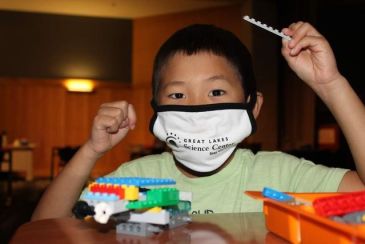
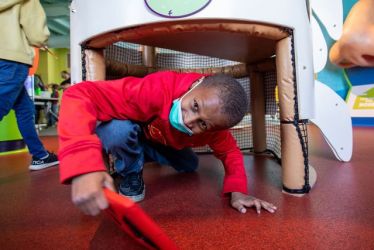
How can we take what we learned from pandemic-era innovations and use it to improve education long-term? How can we use this disruption as an opportunity to build back better and stronger, transforming the systems we know to be damaging to so many young people?
The Response
In Society
Pre-pandemic, the US was already shifting away from the top-down, federally driven reform efforts characterized by No Child Left Behind (NCLB). Guided by the 2015 successor to NCLB, the Every Student Succeeds Act, states began promoting flexibility in setting goals, making improvements, and supporting students through a wide range of approaches. As the KnowledgeWorks Foundation observed in a 2018 report, “These shifts, some of which have been gaining ground for several years, are creating a more decentralized environment in which changemakers of every stripe have increasing ability to influence public education—and in more ways than before.” The disruptions created by COVID-19 demanded innovation and flexibility, and it is widely recognized that education will not simply reset to pre-pandemic norms. Having been essentially drop-kicked into the future, schools have begun to build the infrastructure they need to support distance learning and online instruction. These efforts were given a boost by funding from the Consolidated Appropriations Act of 2021 and the American Rescue Plan to improve broadband access and close the digital divide. The extended pandemic educational experiment bolstered teachers’ confidence in trying out new ideas for how to teach, collaborate with their colleagues, communicate with families, and use technology to engage with students. Now more than two-thirds of teachers surveyed in 2021 say they intend to incorporate tools they adopted during the pandemic into their ongoing teaching repertoire.
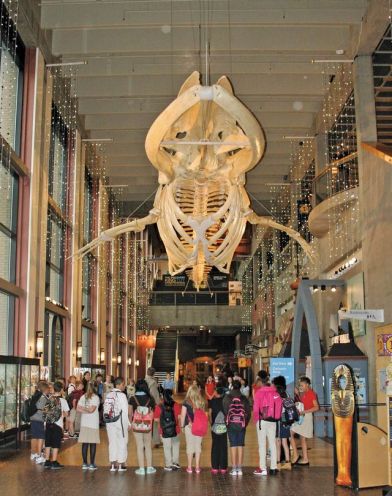
This extended, forced experiment in remote learning accelerated some shifts in education policy that were already underway. In 2012, thirty-six states had already disconnected “seat time” (time spent in the classroom) from the awarding of educational credit. States are waiving seat time in many different ways (including basing credits on mastery of material and allowing for individual seat-time waivers) and for students with many different needs (including those who have fallen behind, those who excel, those who don’t do well in traditional academic environments, etc.) Asynchronous distance learning can be used to reinforce this trend, empowering students to spend as little or as much time as they need to master the material, and to be evaluated on outcomes rather than facetime.
The pandemic also accelerated parents’ search for educational alternatives. Prior to 2020, the US had already seen a slow but steady growth in homeschooling and in the number of students attending charter schools. The COVID-19 pandemic supercharged this trend. Homeschooling is projected to increase by at least 10 percent, and charter school enrollment rose by over 7 percent. Non-charter public school enrollment dropped 3.3 percent, representing 1.5 million students. As school funding follows students, such shifts in enrollment will create a sizeable drain on the public education system.
In Museums
The seminal AAM report Building the Future of Education: Museums and the Learning Ecosystem (2014) chronicled the steady evolution of museums from “informal” educational extras to critical players in mainstream education. In addition to supporting schools, teachers, and learners with content, field trips, and after-school programs, museums are experimenting with ways to be the primary education provider for some children. The past two decades have seen the creation of a growing number of museum schools of various forms, including schools that operate museums or use museums in their community as classrooms and learning locations, schools co-locating in museum space, and museums founding and operating schools. As we point out in the Building the Future report, museums are preadapted for the next era of education, as they are already expert in the kind of self-directed, experiential, distributed learning that fosters the twenty-first century skills of critical thinking, synthesis of information, innovation, creativity, teamwork, and collaboration. They bring these strengths to museum-school partnerships of all types.
The pandemic gave museums the opportunity to demonstrate their educational expertise by stepping in to fill many of the gaps created by the fragility of traditional education systems. Over the past two years, many students lacked critical resources for successful online learning: quiet space, good internet connectivity at home. mentors to help with technology and assignments. Many museums responded by creating study halls and providing learning mentors. When some schools needed more room to practice safe physical distancing, local museums, closed to the public, made their buildings and grounds available as classroom space for months on end. Museum educators turned their time and talent to creating virtual field trips, online classes, curricula, and lesson plans to support teachers and parents who were trying to provide a rich learning experience for children cut off from normal schooling. These efforts introduced many teachers to the wealth of digital resources provided by museums, and taught museums that they can serve educators and students across the country, not just in their geographic communities.
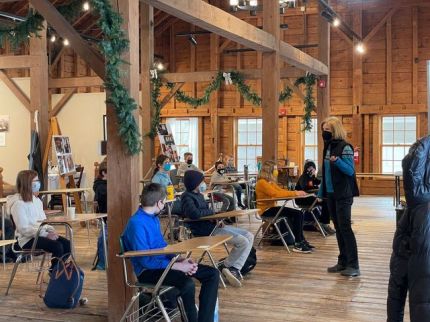
Like teachers, museums may make long-term changes based on what they learned during the pandemic. Many museums found that their digital offerings reached people who were unlikely to visit the museum even in normal times, because of time, distance, or other barriers to accessibility. (These anecdotal reports are bolstered by data from the Culture and Community in a Time of Crisis project, which found museums of all types reached significant numbers of non-museum-goers through digital experiences.) Museums may also decide to continue some of the place-based learning innovations sparked by the pandemic. For example, the Fort Worth Museum of Science and History, which provided space for students engaged in virtual learning, has decided to launch a new museum charter school focusing on STEM (science, technology, engineering, and math). Classroom teachers have told the Pacific Science Center that they want virtual field trips implemented during the pandemic to stay, because it is an efficient use of class time, simplifies logistics, and can more easily be customized to teacher and student needs.
Museum Examples
Museums Supporting Pandemic Education
During the pandemic, some museums, closed to the public, have hosted schools needing more space. The Children’s Museum of Fond du Lac housed students from Treffert Way for the Exceptional Mind, a public charter school that “seeks to teach to children’s individual strengths and emphasizes experiential learning.” The Louisiana Children’s Museum in New Orleans gave exclusive access to its building and grounds to pre-K and kindergarten classes from the Langston Hughes Academy, a FirstLine charter school whose students are 98 percent Black and 74 percent eligible for free lunch. Sixth graders from Woodstock Elementary in Vermont found themselves studying at Billings Farm and Museum, in close proximity to the museum’s exhibits and award-winning herd of Jersey cows.
Many schools went virtual, leaving students in need of quiet spaces with good internet connections to support successful virtual learning. Many museums responded by adapting some of their space as in-person learning labs. The Great Lakes Science Center hosted learning camps during the summer of 2020, with museum staff leading STEM-based activities as well as helping students complete online work assigned by their schools. The Fort Worth Museum of Science and History’s Little Scholars program allowed first- through fifth-graders to do their virtual classes from inside the exhibit halls. The museum provided laptops and Wi-Fi, and museum facilitators were on hand to answer children’s questions and help them get online. The Phillip and Patricia Frost Museum of Science in Miami created the Pods Program to host kindergarten through fifth-grade students accessing virtual school, with museum educators providing homework assistance and technical support.
Museums Providing Formal, Credentialed Learning Experiences
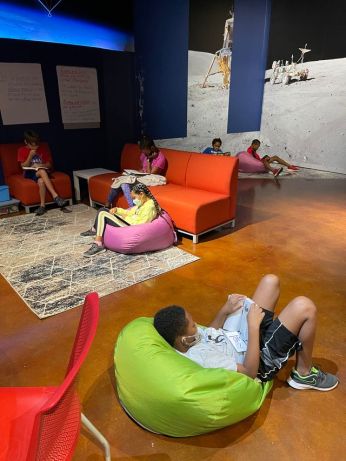
Futures-oriented organizations such as KnowledgeWorks, Big Picture Learning, and Ashoka envision the future of education as being distributed across the community, with learning taking place in a variety of organizations that are empowered to grant formal credit to students. In 2013, Vermont launched the Flexible Pathways Initiative (Act 77), giving secondary school students the right to create personalized learning plans that include educational experiences outside the formal school setting. Now some museums in that state, including Shelburne Farms and the Lake Champlain Maritime Museum, are marketing programs as place-based learning that can integrate into personalized learning plans and meet proficiency-based graduation requirements. During the pandemic, The Besser Museum for Northeast Michigan worked with teachers and homeschool parents to award extra credits for free, independent field trips to the museum’s planetarium programs.
Four Kinds of Museum Schools
Schools Using Local Museums as Classrooms
Some examples include the New York City Museum School (a magnet school in Manhattan for grades nine through twelve), Normal Park Museum Magnet School (a magnet school in Chattanooga, Tennessee, for kindergarten through eighth grade), and The Museum School of Avondale Estates (a public charter school in Decatur, Georgia, for kindergarten through eighth grade). These schools build their curricula around “learning expeditions,” using their local museums as extensions of classroom learning, enabling students (either as a full grade level or a single class) to structure learning around in-depth interactions with exhibits and artifacts.
Schools Creating Museums
The John Early Museum Magnet Middle School (a magnet school in Nashville, Tennessee, for grades five through eight) and The Webb Schools (a private school in Claremont, California, for grades nine through twelve) have created full-fledged museums that engage students in the process of creating exhibits, curating collections, and conducting research. The Webb Schools’ Raymond M. Alf Museum of Paleontology is accredited by the American Alliance of Museums.
Schools Hosted on Museum Campuses
The Manchester Academic Charter School middle school is sited on the campus of the Pittsburgh Children’s Museum and makes extensive use of its Museum Lab. The Dr. Charles R. Drew Science Magnet Museum Site houses grades three through eight at the Buffalo Museum of Science. The Lincoln Nursery School is integrated into the deCordova Sculpture Park and Museum, and the Wonder School preschool collaboration uses the Columbus Museum of Art as one of its campuses.
Museums Creating or Co-Creating a School
At the Grand Rapids Public Museum High School (GRPMHS), students work with staff of the Grand Rapids Public Museum to catalog and research collections and curate exhibits while using the museum exhibits for place-based learning. GRPMHS, which was one of ten schools internationally to receive the XQ Super School grant in 2016, is an ongoing collaboration between the Grand Rapids Public Museum, Grand Rapids Public Schools, Kendall College of Art and Design of Ferris State University, Grand Valley State University, the City of Grand Rapids, Downtown Grand Rapids, Inc., XQ Super School, and the Parent Teacher Community Council.
The Henry Ford Academy is a public, tuition-free charter high school hosted by The Henry Ford. Founded in 1997 and developed in partnership with The Henry Ford and the Ford Motor Co., it serves five hundred students grades 9-12 split between The Henry Ford’s Museum of American Innovation and historic Greenfield Village.
For a map identifying museum schools across the US, visit the website of the National Association of Museum Schools.
Explore the Future
Signal of Change:
A “signal of change” is a recent news story, report, or event describing a local innovation or disruption that has the potential to grow in scope and scale. Use this signal to spark your thinking about how museums might engage with the education system in the future.
Are Microschools the Future of Online Learning?
WGBH, June 28, 2021
The coronavirus pandemic dramatically changed the way tens of millions of kindergarten through twelfth-grade students “do school,” and for some families, it was the push they needed to find alternative educational models tailored to their students’ unique needs and interests. An Arizona-based company called Prenda is helping parents to set up “microschools” in their homes for small groups of students. During the pandemic, Prenda’s enrollment multiplied by four times, and the company now supports more than four hundred microschools. Starting this fall, the New Hampshire Department of Education will partner with Prenda to provide learning pods, in multi-age small-group settings, to help up to five hundred students who struggled with setbacks during the pandemic.
Explore the implications of this signal:
Ask yourself, what if there was more of this in the future? What if it became the dominant paradigm? Write and discuss three potential implications of this signal:
- For yourself, your family, or friends
- For your museum
- For the United States
Critical Questions for Museums
- Working with traditional schools (public and private), how might museums help create better educational experiences for all students?
- How can museums provide alternative educational pathways for learners who aren’t well served by the current system, including homeschooled students?
- How can museums capitalize on their expertise in fostering twenty-first century skills like critical thinking, problem-solving, synthesis, innovation, creativity, teamwork, and collaboration?
- How can museums ensure they are recognized, valued, and supported for the essential roles they play in education?
A Framework for Action
To embed themselves in the educational infrastructure of their communities, museums may want to:
- Invest in their capacity to work with schools: for example, by dedicating one or more full-time staff positions to developing and sustaining museum-school partnerships.
- Develop resources that help educators, parents, and students integrate museum assets into school curricula (with particular attention to research documenting what educators want from digital museum resources).
- Build learning networks that connect diverse educational nodes: museums, libraries, after-school programs, and schools. These learning organizations can work together to reinforce each other’s efforts, meet the needs of all learners, and provide formal credit for learning that occurs across the community.
- Double down on digital. Museums can help bridge the digital divide in education by providing internet access and teaching digital skills as well as enriching education with their own digital learning materials and experiences.
- Create permanent “learning labs” to serve diverse learners, including public school, charter school, or homeschool students needing internet access, equipment, quiet, and mentoring to support successful online learning, as well as home-based learners looking for classroom space.
- Consider joining the growing number of “museum schools,” whether by offering a home for an independent school in museum space, helping a school create its own student-run museum, or starting their own schools run by museum staff.
Additional Resources
- Shaping the Future of American Public Education: What’s Next for Changemakers?, Katie King and Katherine Prince (KnowledgeWorks Foundation, 2018). This paper presents four scenarios of educational changemaking to explore how and why education changemakers might influence American public education over the next decade.
- Building the Future of Education: Museums and the Learning Ecosystem (American Alliance of Museums, 2014). This white paper summarizes the content and ideas coming out of a 2013 assembly of over four dozen educational policy experts, practitioners, funders, education innovators, reformers, student activists, and others shaping the conversation about US education, convened by the American Alliance of Museums and hosted by the National Building Museum in Washington, DC.
